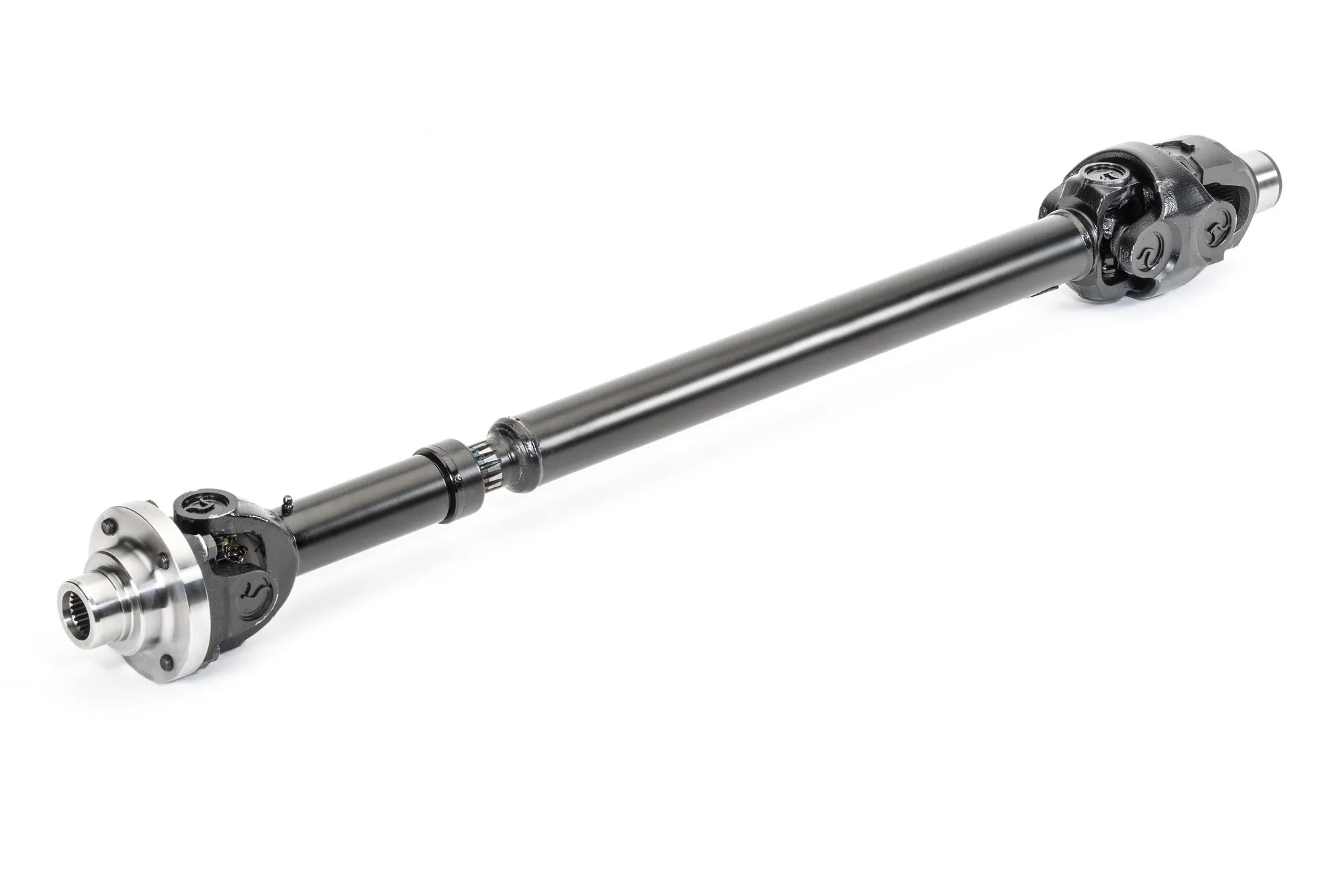
DRIVE SHAFT
Manufacturer & Supplier
A drive shaft, also known as a drive shaft, is the mechanical component that transfers torque from an engine or power source to the wheels of a vehicle or machine. It consists of a tubular shaft with universal joints at both ends, allowing it to bend and rotate while transmitting power. Drive shafts are commonly used in a variety of applications including automotive, industrial, agricultural and Marine.
The drive shaft is usually made of
steel or aluminum. They are usually hollow to reduce weight. The drive shaft is supported by bearings at both ends. Bearings allow the drive shaft to rotate freely and prevent it from binding.
Drive Shaft Application
Automotive
Industrial
Agricultural
Marine
Application
Drive Shaft Advantages
High Efficiency
Durability
Flexibility
Low Maintenance
Cost-effective
Advantages
Here are some of the common problems that can occur with drive shafts:
- Universal joint wear: The universal joints in a drive shaft can wear out over time. This can cause the drive shaft to vibrate and make noise. In severe cases, it can cause the drive shaft to fail.
- Bearing failure: The bearings in a drive shaft can also fail over time. This can cause the drive shaft to wobble and make noise. In severe cases, it can cause the drive shaft to fail.
- Drive shaft misalignment: The drive shaft can become misaligned if the vehicle is involved in a collision or if the suspension components are damaged. This can cause the drive shaft to vibrate and make noise. In severe cases, it can cause the drive shaft to fail.
Drive Shaft Component
Universal joint
Bearings
Drive shaft housing
Component


How Does Drive Shaft Used?
Drive shafts are commonly used in a variety of applications, including automotive, industrial, agricultural, and marine. Some of the most common applications of drive shafts include:
-
Automotive: Drive shafts are used in automobiles, trucks, and other vehicles to transfer torque from the engine to the wheels. They are commonly used in rear-wheel drive vehicles, as well as in four-wheel drive and all-wheel drive vehicles.
-
Industrial: Drive shafts are used in industrial machinery, such as pumps, compressors, and generators, to transfer torque from the power source to the driven components.
Application
-
Agricultural: Drive shafts are used in agricultural equipment, such as tractors and harvesters, to transfer torque from the engine to the wheels or other driven components.
-
Marine: Drive shafts are used in boats and other marine vessels to transfer torque from the engine to the propeller or other driven components.
Advantages of Drive Shafts
Get Involved
High Efficiency: Drive shafts are highly efficient at transferring torque from the engine or power source to the wheels or driven components, resulting in minimal energy loss and improved fuel efficiency.
Durability: Drive shafts are designed to withstand the torque and stress generated by the engine or power source, making them highly durable and long-lasting.
Flexibility: Drive shafts can flex and rotate at different angles, allowing them to be used in a variety of applications and configurations.
Low Maintenance: Drive shafts require minimal maintenance and can often last the life of the vehicle or machinery.
Cost-effective: Drive shafts are a cost-effective power transmission solution that can provide reliable and efficient performance for a wide range of applications.
Extending The Life Of The Drive Shaft
There are some things that can be done to extend the life of the drive shaft. First, it is important to keep the drive shaft clean and lubricated. Secondly, it is important to check the drive shaft regularly for signs of wear. Third, if the drive shaft fails, it must be repaired or replaced.
News & Updates
China Best Sales High Hardness HRC62-65 Drive Shaft Gcr15 (SUJ2) Material Transmission Shaft Hard Chrome Plated Round Bars Linear Shaft
China supplier Gjf Car CV Joint Drive Shaft for CHINAMFG Hilux Vigo Kun25 Tgn26 Kun51 43430-0K020 2004-Hot Sale Products
China manufacturer China Gearbox Transmission Parts Main Drive Input Shaft Me535076 509577 for CHINAMFG
Some Problem
If you notice any of these problems with your drive shaft, it is important to have it inspected by a qualified mechanic.
A failure of the drive shaft can cause the engine to lose power and the vehicle to stall. It is important to repair or replace the drive shaft as soon as possible to avoid these problems.
Here are some of the common problems that can occur with drive shafts:
Universal joint wear
The universal joints in a drive shaft can wear out over time. This can cause the drive shaft to vibrate and make noise. In severe cases, it can cause the drive shaft to fail.
Bearing Failure
The bearings in a drive shaft can also fail over time. This can cause the drive shaft to wobble and make noise. In severe cases, it can cause the drive shaft to fail.
Drive Shaft Misalignment
The drive shaft can become misaligned if the vehicle is involved in a collision or if the suspension components are damaged. This can cause the drive shaft to vibrate and make noise. In severe cases, it can cause the drive shaft to fail.
